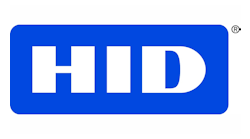Specialized inkjet tech provides integrators new opportunities in emerging, traditional ID card markets
Two types of specialized inkjet technologies are entering the ID and financial card personalization market segments across a wide range of applications. The first type is aimed at a new entry- and mid-level segment that needs printers to be more simple, affordable and easy to use than in the past. The second type is for high-volume users in industrial applications who are looking for faster card throughput with higher resolution, flexible deployment modularity, and reduced total cost of ownership (TCO).
Both types of technology bring big benefits to their respective users. In the entry- and mid-level market, the technology puts secure ID card personalization within reach of small- and medium-sized businesses and organizations that may not previously have been interested in traditional direct-to-card (DTC) printers. In the traditional high-volume market segment, users in government, financial institutions, enterprise operations and service bureaus now have more capable and secure personalization solutions for their applications. Integrators who understand best practices for deploying each type of inkjet printer technology can bring high-value capabilities to a broader set of customers.
A New Entry- and Mid-Level Market
Smaller organizations have historically been reluctant to adopt secure card personalization for applications including corporate and visitor badges, student and faculty IDs, and gift or loyalty cards. Previous choices were limited to costly and complex ribbon-based direct-to-card (DTC) printers, or inkjet printers that use adhesive, paper-based labels.
Now there is a new option - a printer that uses specialized inks that naturally adhere to standard, off-the-shelf polyvinyl chloride (PVC) ID card stock. Replacing print ribbons with snap-in ink cartridges simplifies use and maintenance and eliminates wasting an entire set of ribbon panels for each ID card design. The drop-on-demand (DOD) technology ejects drops from the printhead only when required, and the specially formulated, inherently UV-stable inks deliver higher-quality and more durable, fade-resistant images, text and barcodes than DTC-printed cards, even without expensive overlay protectants.
Integrators should walk customers through the following questions as they evaluate these printers:
- What card stock is supported? In addition to supporting all popular card stock for single-side thermal inkjet printing, the printers also work with laminated PVC for credit card construction. It also delivers high-quality, high-definition, true-edge-to-edge ID card printing.
- What resolution and other print capabilities are supported? Users need 600 x 1200 dots per inch (DPI) inkjet resolution to print sharp, brilliant images plus crisply defined text and barcodes. Today’s inkjets deliver this quality and also print barcode-readable composite black and/or on chip-embedded cards without voids or white areas. Choose a printer that can also handle complex characters like Kanji, Arabic and Cyrillic, as well as more elaborate designs. Image durability is ensured through a combination of ink formulation and heating technology for fast drying.
- How does the printer impact cost? Depending on card complexity, a single ink cartridge can produce hundreds more cards than is possible with print ribbons. There also is the option to make cards more valuable by adding contactless card encoding reader functionality. This ensures that the same card used for identification can also be used for door entry, cashless vending, time and attendance, gift and loyalty program applications, and financial cards that use QR codes.
- How easy is the printer to deploy? Today’s inkjet printers are easy to deploy and use. Look for other attributes, as well, like a small footprint and convenience features like input and output on the same side of the unit.
As these inkjet printers expand opportunities for integrators in emerging markets, similar advancements are having an equally transformative impact on ID and financial card personalization in traditional, high-volume industrial applications.
Filling a Gap for Industrial Users
In the industrial card personalization category, today’s inkjet printers deliver better quality at lower cost than ribbon-based technology, along with easier deployment, upgrades and maintenance than possible with large central issuance machines. They enable users to leverage the simplicity of DTC and retransfer desktop printers without the high ribbon costs, reduce total cost of ownership as compared to central issuance machines, and create new opportunities to deploy, upgrade and scale capabilities as business needs evolve.
Today’s new inkjet printers deliver their benefits through a combination of printhead advancements, specially formulated inks, and ultraviolet (UV) LED ink-curing techniques that work together to deposit and cure thousands of microscopic ink droplets on multiple card surfaces with optimal size and placement.
Following are the questions integrators should help their industrial customers answer as they go through the printer selection process:
- What throughput can the printer support, on what card stock? The printer should work with 100% polycarbonate cards, press polished PVC, composite (PET/PVC with PVC as an outer layer), laminated PVC (credit card construction), and laserable PVC cards. Text and images should dry almost immediately, even when printing at up to 1200 Dots-per-Inch (DPI) resolution. For even greater durability, choose a printer that can layer a clear ink over images and text after the color ink droplets are applied.
- Does it have a modular system architecture? The ability to purchase printing and laser engraving systems together or as separate, stand-alone units, ensures that value can be added over time, as needed. A user should be able to start with a laser engraving system for durable and tamper-proof financial card personalization, and later add a color UV ink module to create additional new and unique card designs. Input hoppers and output stackers can be added to scale production as needed, along with card-encoding modules for printing and encoding credentials for access control applications, and a camera vision system for engraved microtext and more accurate image data placement and registration on a pre-printed card surface.
- What cost savings should be expected as compared to DTC/retransfer printers? Look for the inkjet unit to reduce costs per card as much as 80 percent compared to DTC/retransfer printers, which create considerable waste by using an entire set of ribbon panels for each card design.
- What new risk management capabilities are possible with the new inkjet printers? Replacing a single, large piece of equipment with multiple desktop inkjet units offers the redundancy to ensure that print productivity can continue, uninterrupted, even if one printer is not functional.
Today’s new category of card personalization solutions dramatically alters the printer selection process in both emerging and traditional markets. Units designed for entry- and mid-level market applications create a new benchmark for affordability and ease of use, while those designed for the traditional industrial sector fill the gap between smaller desktop printers and today’s complicated, room-scale units while offering valuable advantages when compared to both alternatives.
About the Author:
Jim Meier is a Senior Director of Product Marketing with HID Global and manages the portfolio of desktop printer products. He has more than 25 years of experience working with printing technologies and has 20 patents related to these technologies.




